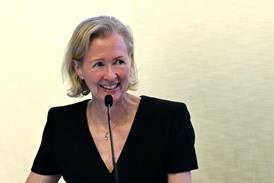Jon Woolston advises medium-sized law firms on the various options for expansion, and argues that a bold approach and a clear vision of what the firm wants can bring significant results
A nyone who has acted as an adviser to medium-sized firms of solicitors will have heard the words 'if only we could be bigger, everything would be OK'.
The usual reaction to this is for a general discussion on all the prospects of the firm, a comparison with the nearest competitors, and a conclusion that there is not a lot that can be done, other than start another campaign for clients.
Whether the presumption that bigger is better is right is a moot point, but growing any practice is a time-consuming business.
An acronym worth bearing in mind is GAME. While the first stands for growth, the 'A' is for acquisition, which is unquestionably the easiest way of growing a practice.
There is no doubt that the lot of the sole practitioner is a hard one and it is not likely to get any easier in the future. The demographic profile of law firms shows that, at any time, there are a number of sole practitioners locally with only one objective - how can they give up practice?
Find your target
The growing law firm first needs to decide what it wants - either more of the same or something different - and then produce a target list of local practices which fit those criteria.
The next stage is to designate someone to get close to the practice and, at some stage, to ask the all-important question: 'How is business?'
Only two answers are generally given. 'Really good', in which case enquire why things are so good and maybe follow up with a confirmation (if appropriate) of 'so, no plans for retirement yet, then?' and mark them down for the 'how is business?' question again in a year to 18 months.
If the answer is 'I would give it all up tomorrow if I only could', then you have your target firm, and a simple 'I think I can help you' should take you to the next stage.
Acquisition is easy, in that you are looking for a simple formula, whereby the proprietor merges with your practice, does not become a partner, but acts as a consultant for, say, two years. That way, you should manage to keep more than 95% of the clients.
It will involve some payment and the level of this depends on the type of practice you take over. With the normal deferred consideration clauses, many sole practitioners can be acquired for a relatively small cash outlay (especially compared to the cost of employing a new fee-earner and expecting that person to build his or her practice from scratch).
The deal will usually pay for itself over three years - or you have paid too much - and the critical mass will increase, with the added opportunity to cross-sell to an untapped market.
The process to be employed in acquisition is an article in itself, but has similarities with all business disposals.
Merging can be tough
If the bite-sized approach is not for you, then it is straight to the merge ('M') option. For some reason, merger is actually the first resort for some medium-sized firms when they want more than fee growth. It is not an easy option, as inevitably it will involve a new partnership agreement and may require one set of partners to take a lower amount of profit than previously.
Quite often this happens through social contacts or mutual respect, and the main benefit is an economy of scale, rather than fee growth. If the merger is a success, then it is hoped that it would be easier to attract more, high-value work - but the two do not always follow.
Merging the two firms is just the start of the process, as there will be the combining of two sets of systems, pay scales, fee structures, working practices, and so on. It is also true that, having been through one merger, few firms have the immediate appetite to attempt another one straight away. So it can be an end rather than a means.
However, those firms that acquire other practices tend to repeat the trick as often as they can, having ironed out the wrinkles in their technique. Mistakes in merging tend to be much more difficult to unscramble.
Showing enterprise
If neither acquisition nor merger appeals to you and the desire is still to add critical mass to your practice, then firms can resort to a different enterprise ('E'). In the past, this has included an estate agency or a financial services business.
This is without question the riskiest of the four options. But entrepreneurs can make it work as long as they break the mould and do not think like a solicitor and run it as a business.
Both of these business models require a different approach to a law firm, such as a proper marketing strategy, ruthless sales techniques, and treating clients like customers.
This often causes tension in the typical law firm, but with the advent of alternative business structures, such as multi-disciplinary partnerships, there is the prospect of such diverse business models coming back on the agenda.
So it is all too easy to think there is only one answer to the 'How do I grow my turnover?' question, when in truth many firms have proved time and time again that a bold move can bring results for much less effort than might be first thought.
However, the first question - 'what do we want to achieve (specifically)?' - is still the most important. Then be bold and follow it through.
Jon Woolston is chairman of the Solicitors Group of the Institute of Chartered Accountants in England & Wales and a partner in accountancy firm Larking Gowen, Norwich.
Charity Explorer provides a reputable reference tool for solicitors, will-writers and their clients who want to leave a legacy or charitable gift.
Visit Charity Explorer
Whether you are looking for legal expert witnesses, legal training/CPD providers, international law firms, administration of estates, legal software suppliers, barristers chambers or any other general legal service, the Legal Services Directory will provide a suitable option.
Visit Legal Services Directory

























No comments yet